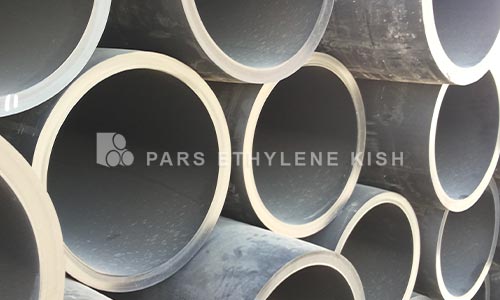Which is stronger, HDPE or PVC?
HDPE (High-Density Polyethylene) and PVC (Polyvinyl Chloride) are two widely used thermoplastic materials with distinct properties and applications. When it comes to comparing their strength, it's important to consider various factors and delve into the mechanical properties and characteristics of each material.
Strength is a broad term that encompasses multiple aspects, including tensile strength, impact resistance, flexural strength, and compressive strength. Let's examine these factors and compare the strength of HDPE and PVC in more detail.

-
Tensile Strength:
Tensile strength refers to the ability of a material to withstand pulling or stretching forces without breaking. HDPE typically exhibits higher tensile strength compared to PVC. The molecular structure of HDPE, with its long linear chains, contributes to its strength. HDPE has a tensile strength ranging from 20 to 37 MPa (megapascals), depending on the grade and manufacturing process. On the other hand, PVC has a lower tensile strength, usually ranging from 10 to 25 MPa.
-
Impact Resistance:
Impact resistance refers to a material's ability to absorb energy and resist fracture under sudden impact or shock loading. HDPE is known for its exceptional impact resistance. It can absorb impacts and deform without breaking, making it suitable for applications where impact resistance is crucial. PVC, on the other hand, is relatively more brittle and prone to cracking or fracturing under impact. While PVC can withstand moderate impacts, it is generally less impact-resistant than HDPE.
-
Flexural Strength:
Flexural strength, also known as bending strength, measures a material's ability to withstand bending or flexing without permanently deforming or breaking. HDPE exhibits excellent flexural strength due to its high strength-to-density ratio. It can withstand bending forces and return to its original shape. PVC also has good flexural strength, but it is generally lower than HDPE. However, the specific flexural strength of both materials can vary depending on the grade and formulation.
-
Compressive Strength:
Compressive strength refers to a material's ability to withstand compressive forces without deformation or failure. HDPE has good compressive strength, allowing it to withstand high pressure or loads without collapsing. PVC also exhibits acceptable compressive strength, but it is typically lower than HDPE. For applications that involve heavy loads or structural support, HDPE is often preferred due to its higher compressive strength.
It's worth noting that the mechanical properties of both HDPE and PVC can be influenced by various factors, such as the grade of the material, molecular weight, processing conditions, and any additives or reinforcements used.
In addition to their inherent strength, other factors may also play a role in determining the suitable material for a specific application:
-
Chemical Resistance:
Both HDPE and PVC have excellent chemical resistance properties, making them suitable for various industrial and chemical applications. They can resist a wide range of acids, bases, solvents, and corrosive substances. However, PVC may be more susceptible to certain chemicals, such as hydrocarbons, compared to HDPE. Therefore, the specific chemical environment should be considered when selecting the appropriate material.
-
Temperature Resistance:
HDPE has better temperature resistance compared to PVC. It can withstand a wider temperature range without significant degradation. HDPE retains its mechanical properties at temperatures ranging from -50°C to 80°C (-58°F to 176°F). PVC, on the other hand, has a lower temperature range, typically from -10°C to 60°C (14°F to 140°F). For applications that involve exposure to extreme temperatures, HDPE may be more suitable.
-
UV Resistance:
HDPE has excellent resistance to UV radiation, making it suitable for outdoor applications. It can withstand prolonged exposure to sunlight without significant degradation or color fading. PVC, on the other hand, may be more susceptible to UV degradation over time. Therefore, if UV resistance is a critical requirement, HDPE is generally a better choice.
-
Installation and Fabrication:
Both HDPE and PVC offer advantages in terms of ease of installation and fabrication. HDPE pipes, for example, are lightweight, flexible, and can be easily joined using various methods such as fusion welding. PVC pipes are also relatively easy to install and can be joined using solvent cement or mechanical fittings. The specific installation requirements and techniques may vary depending on the application and local regulations.
In conclusion, HDPE generally exhibits higher strength, including tensile strength, impact resistance, flexural strength, and compressive strength, compared to PVC. HDPE's molecular structure and high strength-to-density ratio contribute to its superior mechanical properties. However, it's important to consider other factors such as chemical resistance, temperature resistance, UV resistance, and installation requirements when selecting the appropriate material for a specific application. The final choice should be based on a comprehensive evaluation of the project's requirements, including strength, durability, environmental factors, and cost considerations.